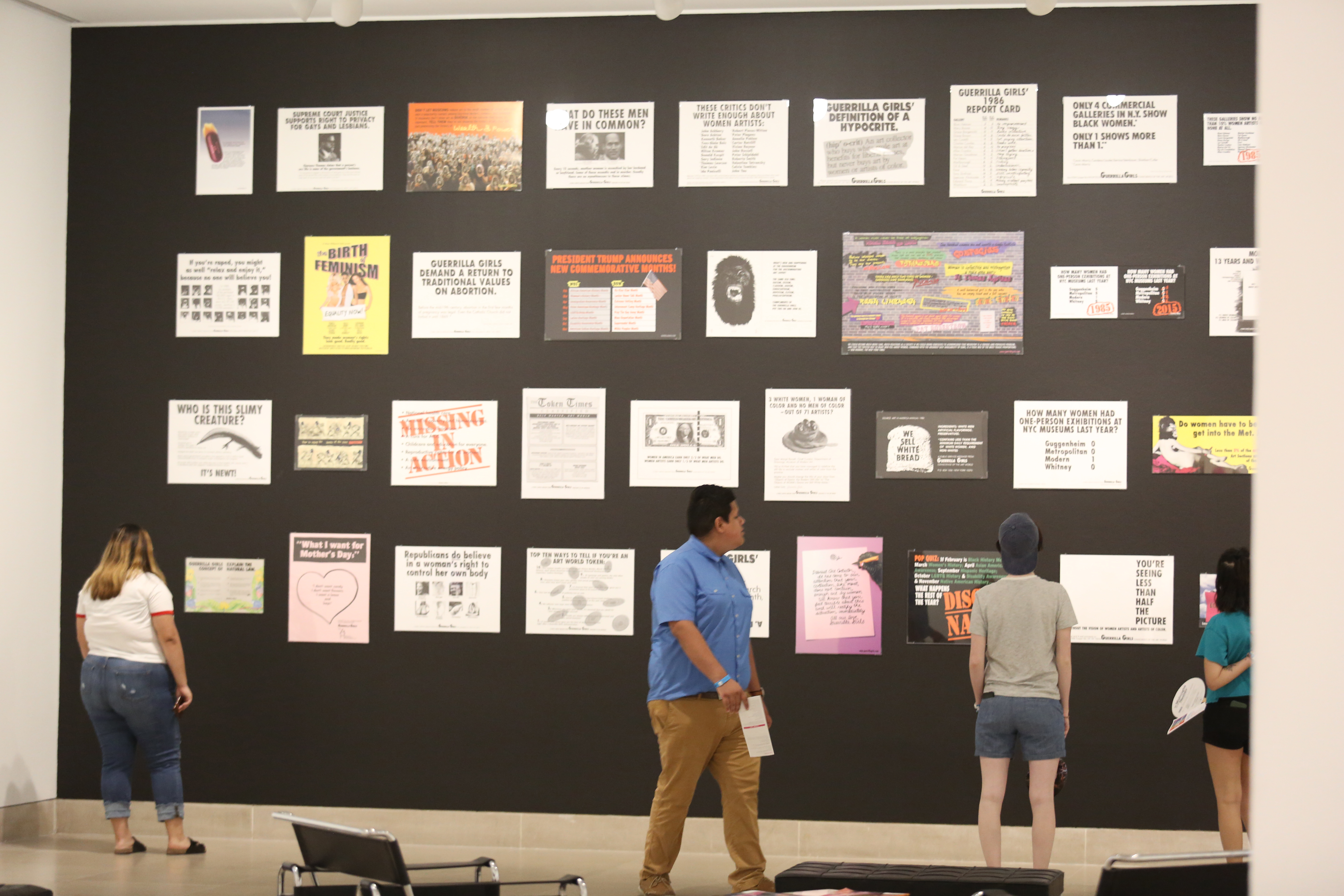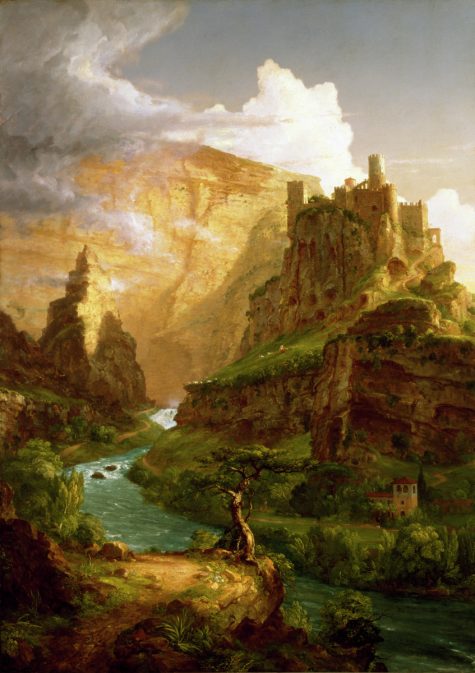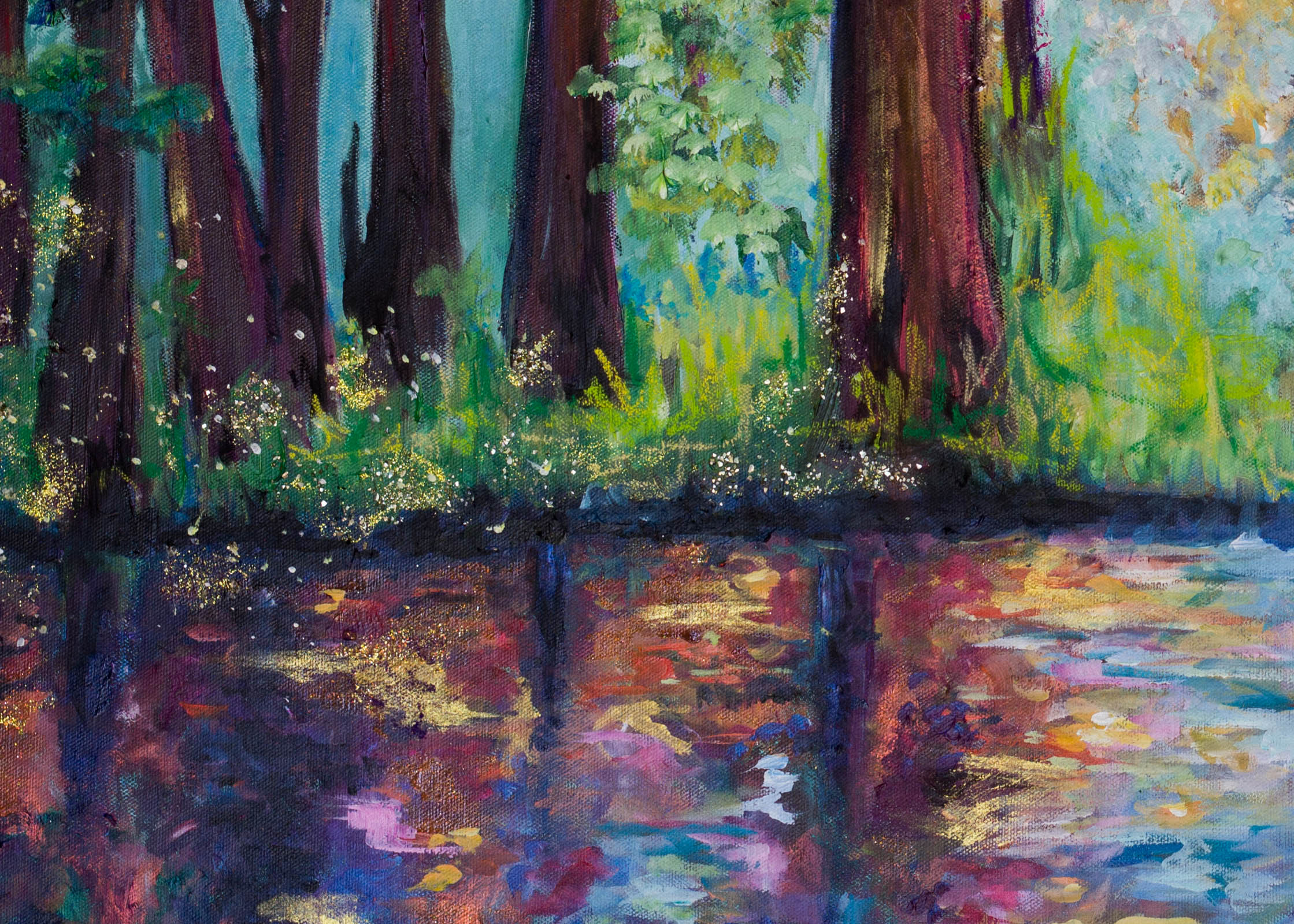Have you ever wandered through the galleries at the DMA and thought to yourself, “Hmm, I wonder how they got this huge sculpture up those steps?” or “Wow! I bet it was really hard to hang that giant painting!” If you have, this post is for you! In one of the DMA’s newest installations, Women + Design: New Works, there are several pieces that required significant effort on the part of the DMA’s Collections team to install. Check out these behind-the-scenes photos and fun facts from the installation process, and visit the Museum to see these works in person—and for FREE—now through Sunday, February 17, 2019, in the Mary Noel and Bill Lamont Gallery.
 Objects Conservator Fran Baas adjusts the laser-cut polyester lace on Iris van Herpen’s Voltage Dress.
Objects Conservator Fran Baas adjusts the laser-cut polyester lace on Iris van Herpen’s Voltage Dress.
 A team of preparators works on lowering the two pieces of Najla El Zein’s Seduction onto the platform. Each piece of the sculpture weighs approximately 1,500 pounds and needs to be moved with a gantry crane. The lower stone was placed first, and then the upper stone had to be carefully lowered onto it.
A team of preparators works on lowering the two pieces of Najla El Zein’s Seduction onto the platform. Each piece of the sculpture weighs approximately 1,500 pounds and needs to be moved with a gantry crane. The lower stone was placed first, and then the upper stone had to be carefully lowered onto it.
 Fran Baas, Lance Lander, and Mike Hill review the instructions for assembling Faye Toogood’s Tools for Life Mobile 2. Because the components of the mobile are heavy, the team had to know exactly what to do to minimize unnecessary handling.
Fran Baas, Lance Lander, and Mike Hill review the instructions for assembling Faye Toogood’s Tools for Life Mobile 2. Because the components of the mobile are heavy, the team had to know exactly what to do to minimize unnecessary handling.
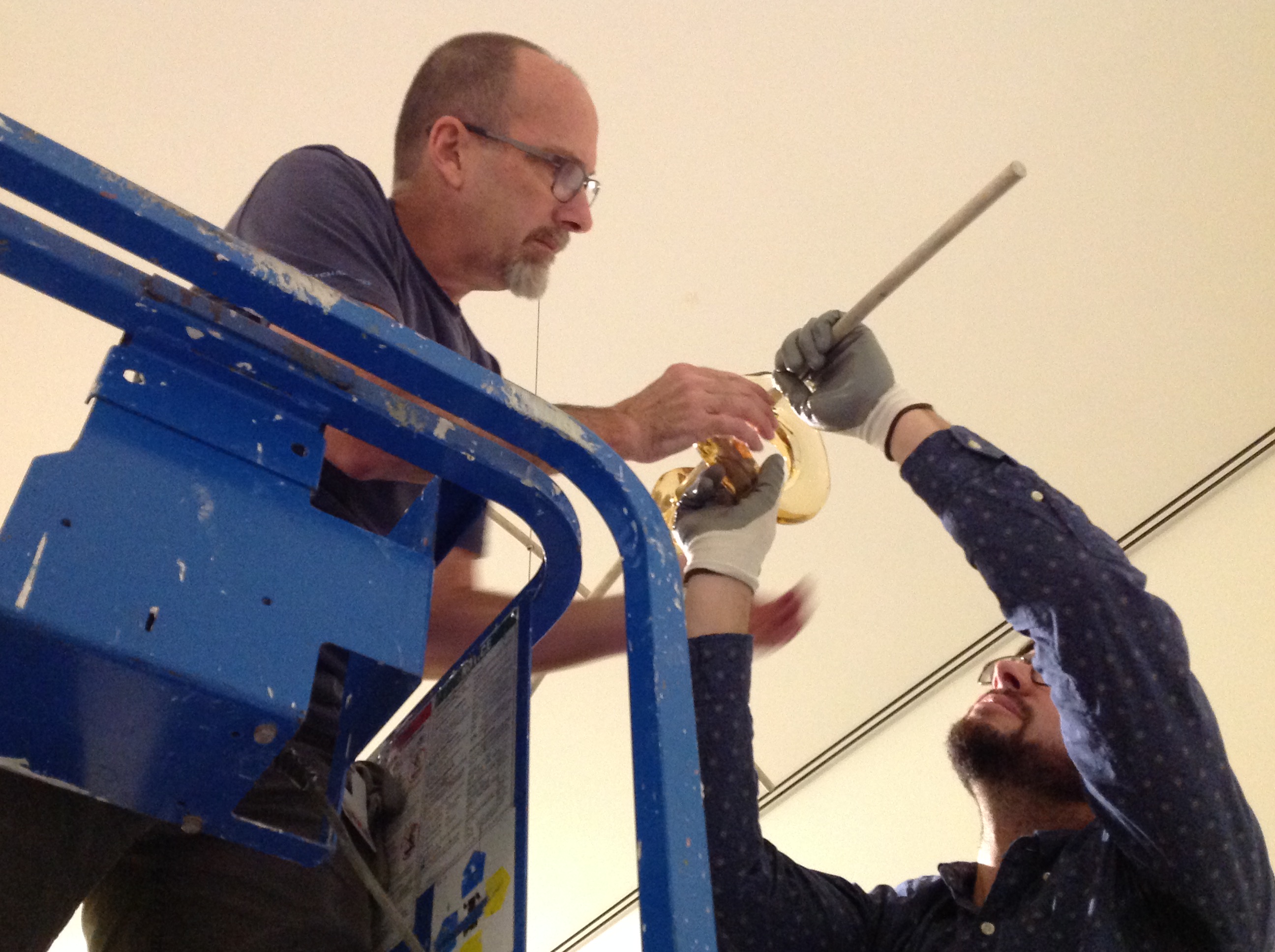 Mike Hill and John Lendvay work to assemble Tools for Life Mobile 2 as it hangs from the ceiling.
Mike Hill and John Lendvay work to assemble Tools for Life Mobile 2 as it hangs from the ceiling.
 Doug Velek takes measurements for the two pieces of jewelry by Katie Collins. Prior to installing the work, the preparators made the wedges and lifts used to display the jewelry in the exhibition. After confirming that the necklaces were centered on the wedge, preparators used pins to secure them in place.
Doug Velek takes measurements for the two pieces of jewelry by Katie Collins. Prior to installing the work, the preparators made the wedges and lifts used to display the jewelry in the exhibition. After confirming that the necklaces were centered on the wedge, preparators used pins to secure them in place.
 Curator Sarah Schleuning and preparator Russell Sublette discuss the placement of the three stools by Faye Toogood.
Curator Sarah Schleuning and preparator Russell Sublette discuss the placement of the three stools by Faye Toogood.
Katie Province is an Assistant Registrar for Collections and Exhibitions at the DMA.




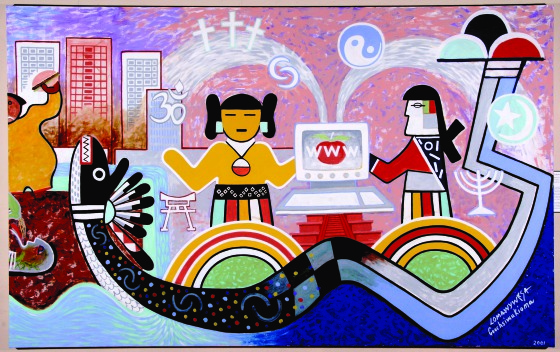


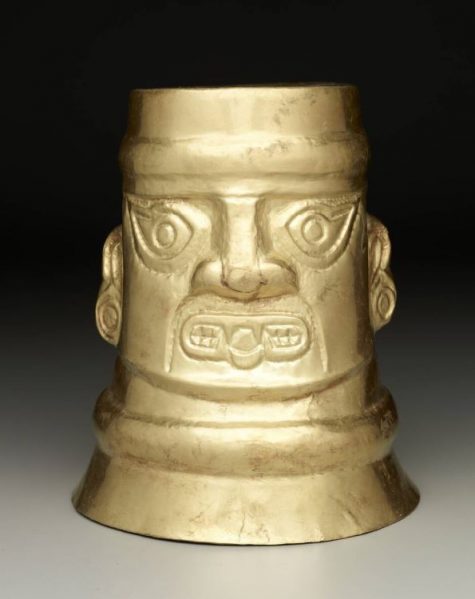

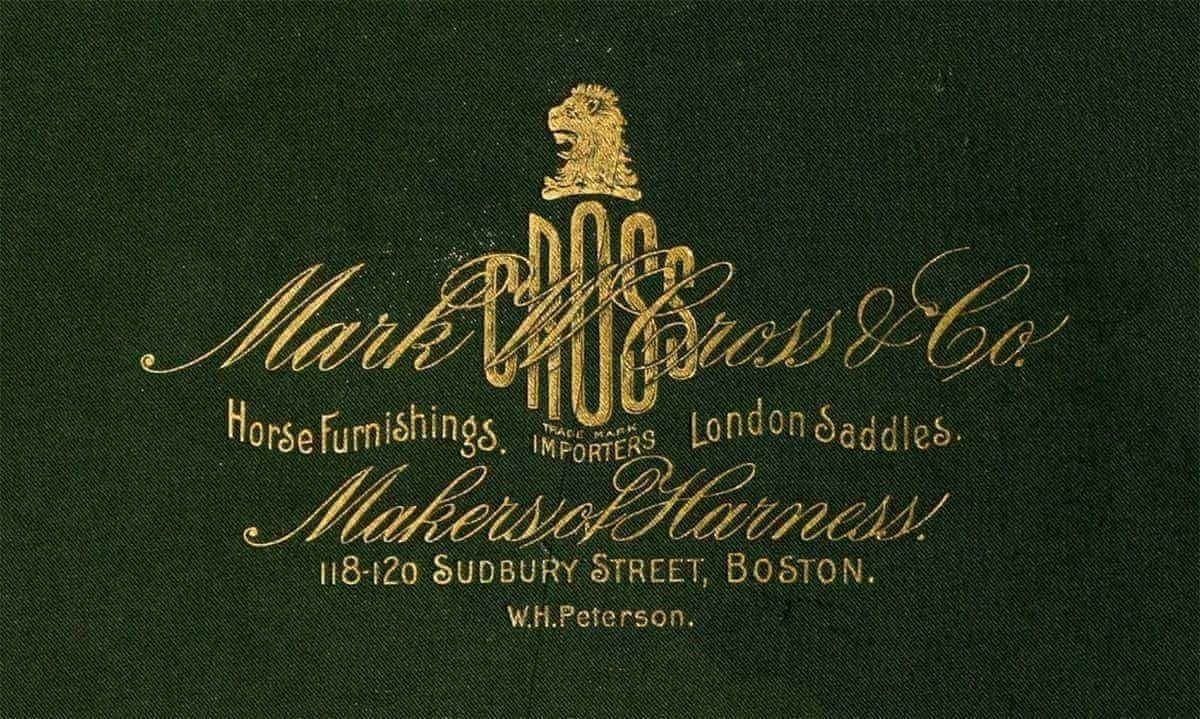
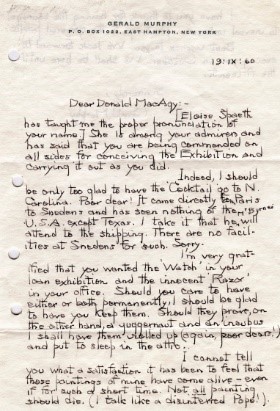
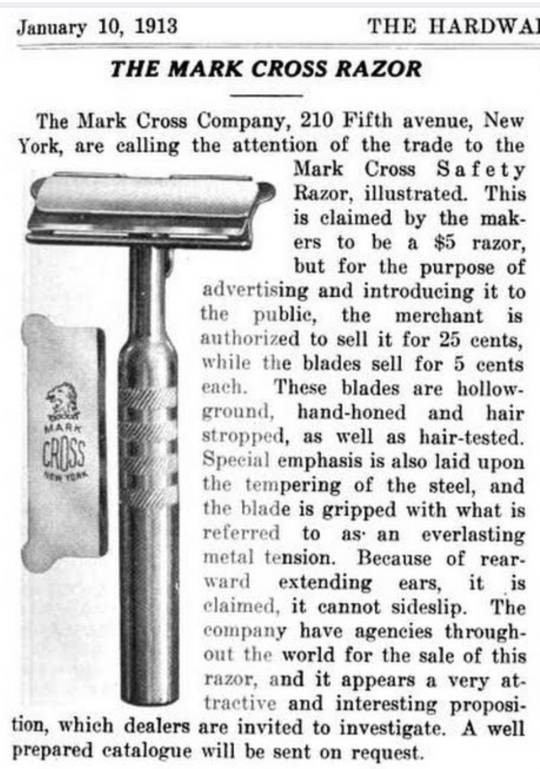



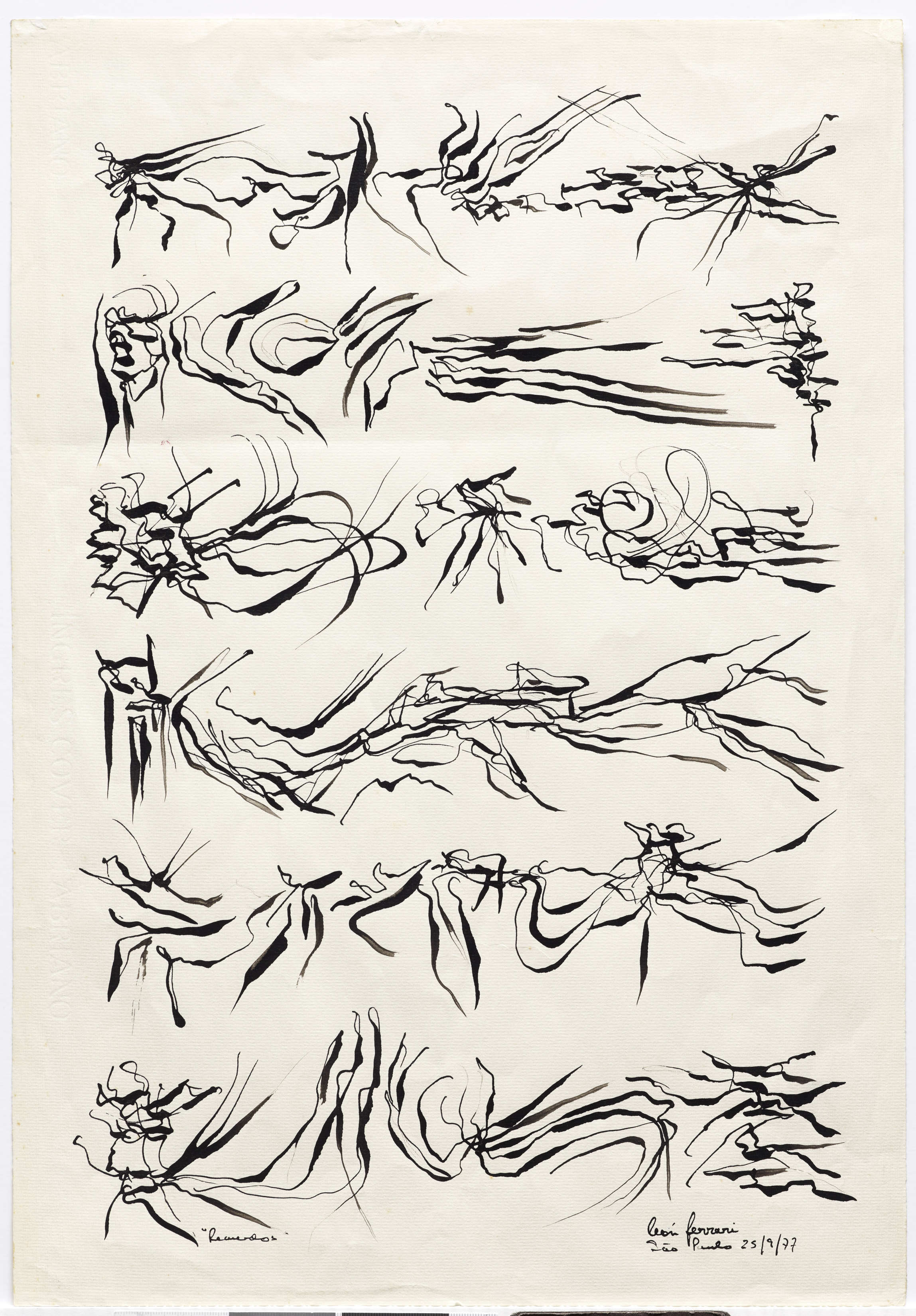



 “Laura Owens is an amazing artist; prior to my venture I hadn’t heard of her. But now, I am a fan.” –
“Laura Owens is an amazing artist; prior to my venture I hadn’t heard of her. But now, I am a fan.” –

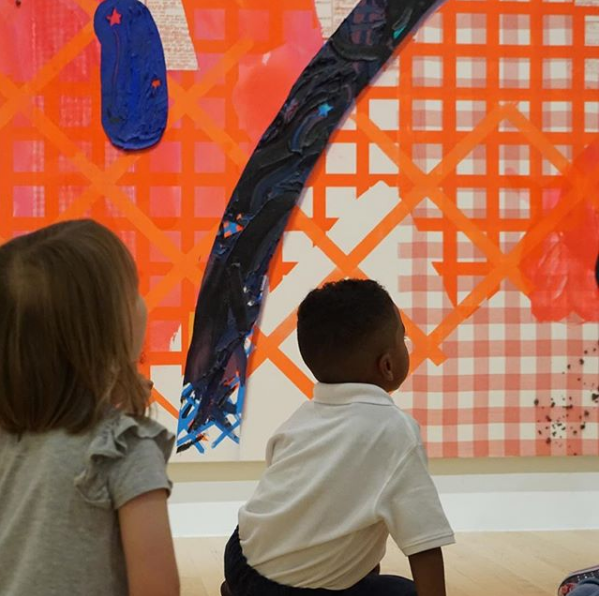 “Her work is LOUD, quirky, silly, dimensional, full of layers!” –
“Her work is LOUD, quirky, silly, dimensional, full of layers!” – “Exhibición de Laura Owens está llena de color y amor” –
“Exhibición de Laura Owens está llena de color y amor” – “This painting really cat-ures my spirit.” –
“This painting really cat-ures my spirit.” –